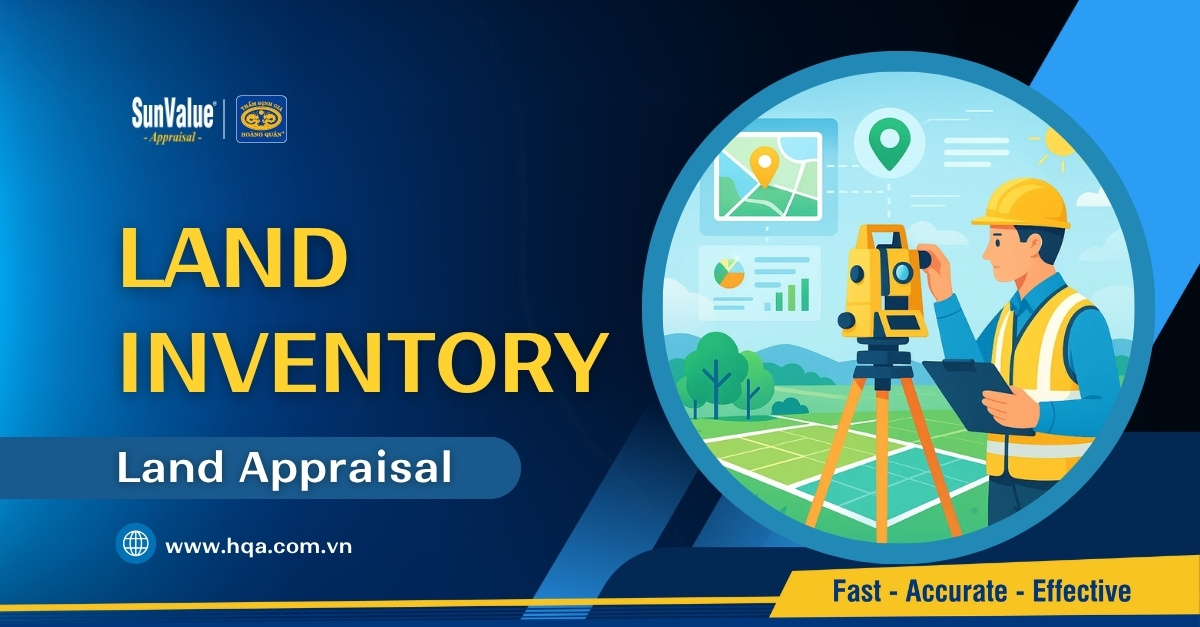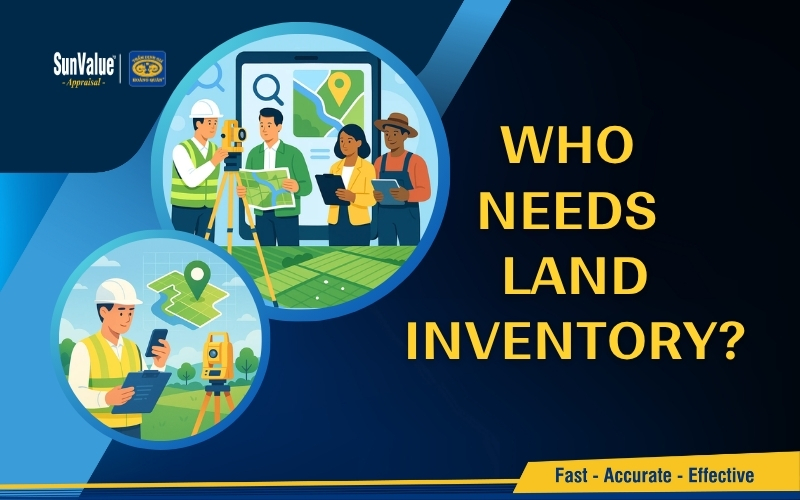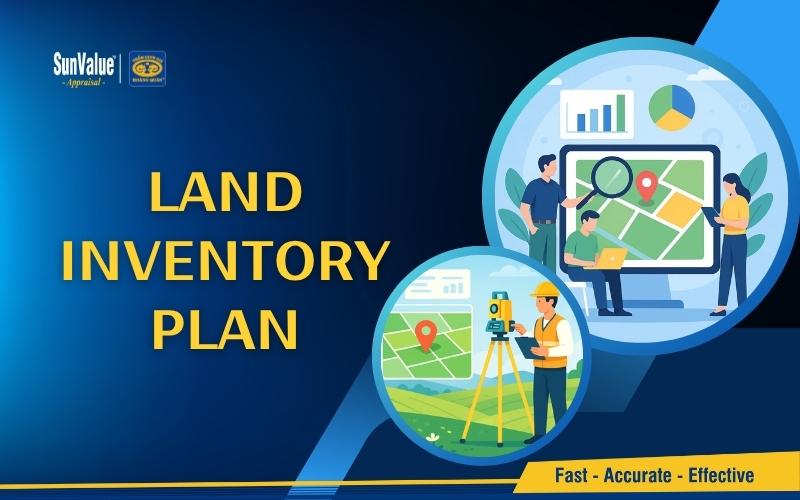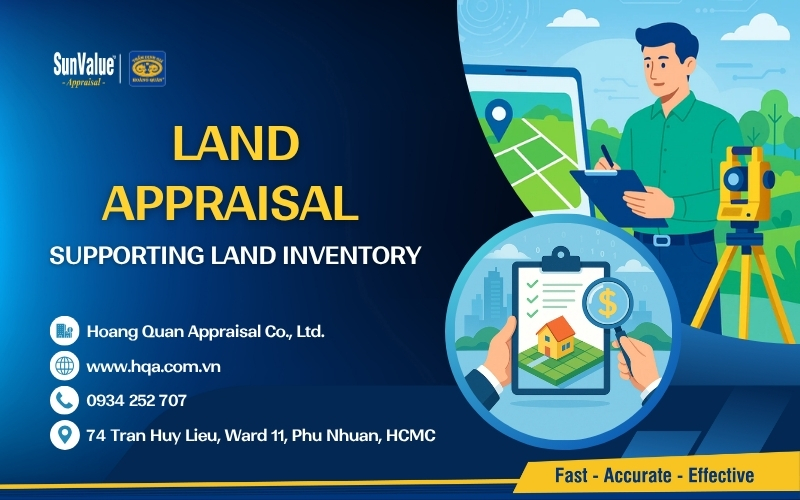In today’s era of economic and social development, land is not just a natural resource - it is a vital national asset. Conducting a land inventory is a key step in the efficient, sustainable management, use and development of land. It’s not only a legal requirement under Vietnam’s Land Law 2024 but also a strategic tool for government agencies, businesses and individuals to assess current land use, support planning, and drive investments.

What is land inventory? How it differs from land statistics
As defined in Clause 29, Article 3 of the 2024 Land Law, land inventory refers to the process organized by the State to investigate, collect and assess land use status at a specific point in time, including changes since the previous inventory. This involves both cadastral records and field surveys.
In contrast, land statistics (Clause 41, Article 3 of the same law) involve only a summary based on cadastral documents, excluding field verification and are conducted annually.
Distinguishing between inventory and statistics ensures compliance with the law and enhances land governance accuracy and efficiency.
Who needs land inventory? It’s not just for government agencies

Many assume land inventory is only the duty of state agencies. In reality, it concerns a wide range of stakeholders:
-
Enterprises: Needing land appraisals for investment planning, land-use conversion, compensation, asset restructuring or financing purposes.
-
Government agencies/project management boards: Managing public land and property.
-
Households and individuals: Clarifying legal rights, boundaries and land value for inheritance, investment or sale.
-
Banks and credit institutions: Appraising land collateral before issuing loans.
For example, in Hanoi, some businesses discovered during land inventory that leased land had been reassigned for different uses but not updated in official records - leading to disputes in value calculation. Thus, land inventory not only "records facts" but also protects legal rights.
2024 land inventory plan: Timeline and scope
According to Plan No. 271/KH-UBND issued on September 18, 2024, the Hanoi People’s Committee will carry out the 2024 land inventory between August 1, 2024 and March 1, 2025.
Key tasks include:
-
Evaluating current land use
-
Identifying land use changes
-
Preparing updated land use maps
Land users must cooperate with relevant authorities and provide all necessary information to ensure a transparent and complete inventory process.

Key indicators for land inventory and statistics
Under Article 58 of the 2024 Land Law, land inventory includes indicators such as:
-
Area by land type (agricultural, non-agricultural, unused land, etc.)
-
Land users (individuals, enterprises, government units)
-
Land management and allocation entities
Correct identification of these indicators gives authorities an accurate overview of land use, serving as a foundation for effective planning and management.
Land inventory implementation time and inventory cycle
According to Circular No. 08/2024/TT-BTNMT, land inventory is conducted every five years. The 2024 land inventory will begin on August 1, 2024 and must be completed by March 1, 2025.
Conducting the inventory within the prescribed timeframe ensures the continuity and accuracy of land data, serving effective management and planning purposes.
Land appraisal supports land inventory: A precise solution from Hoang Quan Appraisal
When conducting a land inventory, determining the value of land-use rights is an essential step - and it is also the core expertise of Hoang Quan Appraisal.
With over 23 years of experience and a nationwide network of offices, Hoang Quan Appraisal is a leading provider in real estate and land appraisal. We have partnered with local authorities, businesses, and organizations in many large-scale land inventory projects. Our land appraisal services help clients:
-
Accurately determine the market value of land based on the latest inventory data.
-
Optimize valuation documents for use in land inventory, cadastral records, land pricing frameworks and K coefficient adjustments.
-
Support tax calculation, land-use fee payment for allocated or leased land, credit applications, auctions, transfers and asset settlement.

Clients working with Hoang Quan Appraisal are supported by a team of seasoned appraisers who apply digital mapping tools, updated market transaction data and local price indices - combined with modern appraisal models - to ensure evaluations are objective, accurate and timely.
Notably, Hoang Quan Appraisal is an approved partner of many major banks such as BIDV, Vietcombank, Agribank, MSB, SHB, VIB,... making it easier for clients to access financing after completing land inventory and valuation.
Contact us today for one-on-one consultation, a special quotation and full-service appraisal support from A to Z!
Hoang Quan Appraisal Co., Ltd.
Address: Hoang Quan Appraisal System
Phone: 0934.252.707
Email: contact@sunvalue.vn
Facebook: Hoang Quan Appraisal
Website: hqa.com.vn
Conclusion
Land inventory is not only a legal obligation but also a powerful tool for managing and developing land resources. When carried out properly and in compliance with regulations, it provides government agencies, businesses and individuals with a clear overview of land use, supporting smarter management and investment decisions.
Hoang Quan Appraisal is ready to accompany you in the land inventory process - offering optimal, efficient land appraisal solutions tailored to your needs.

